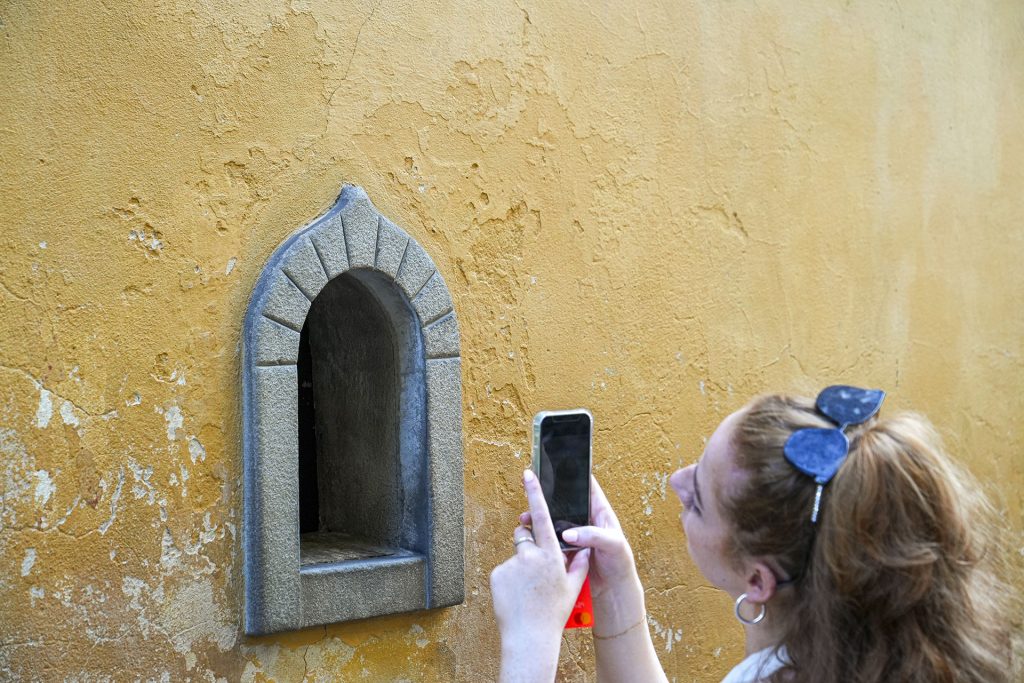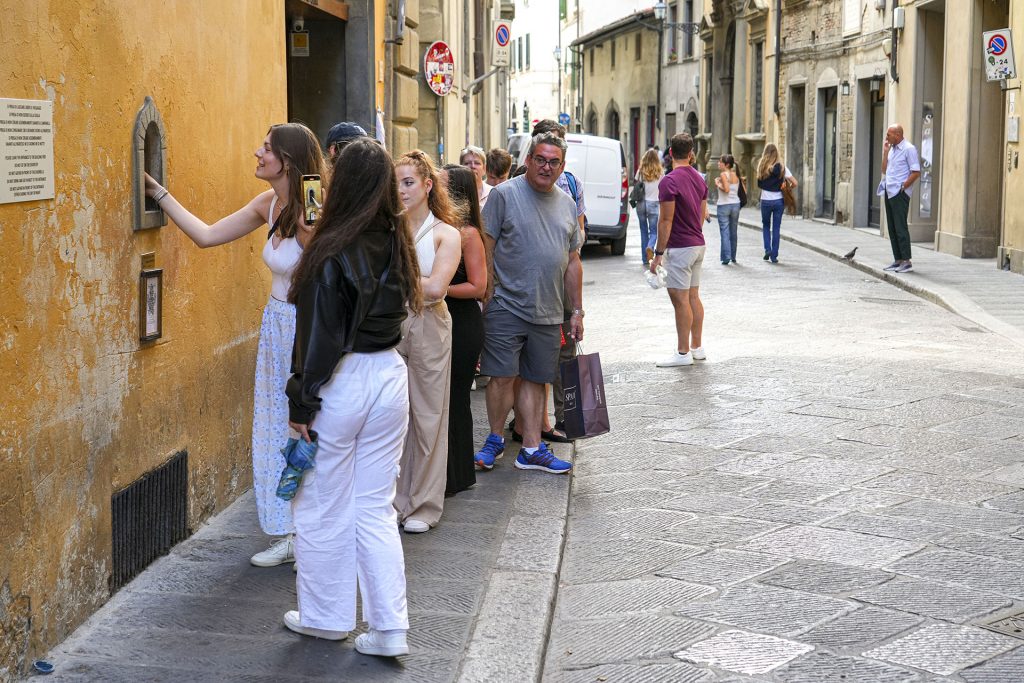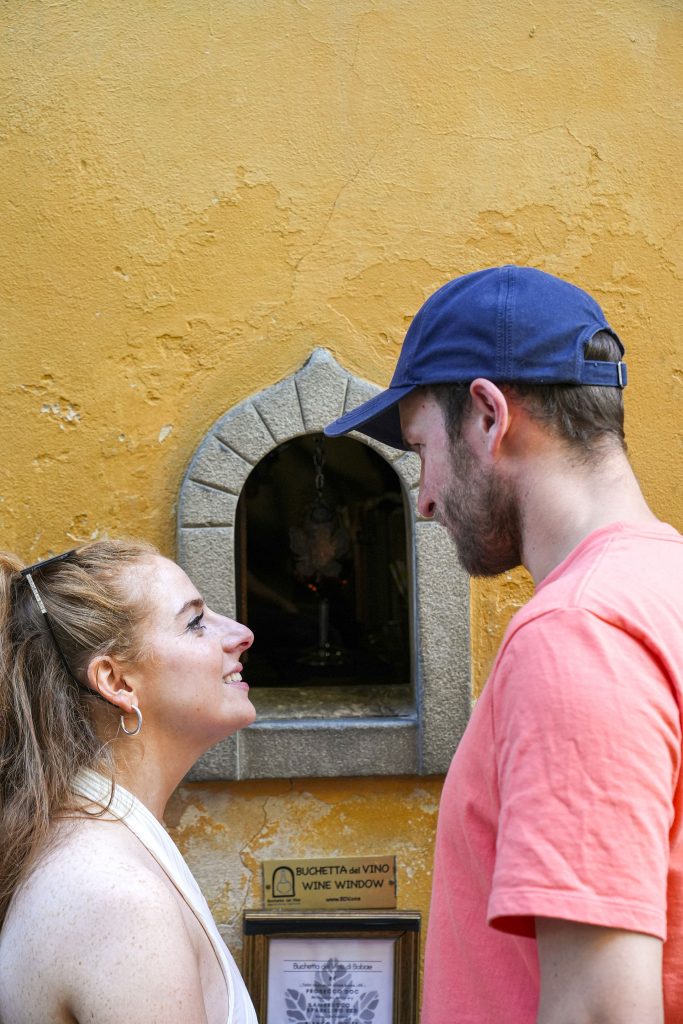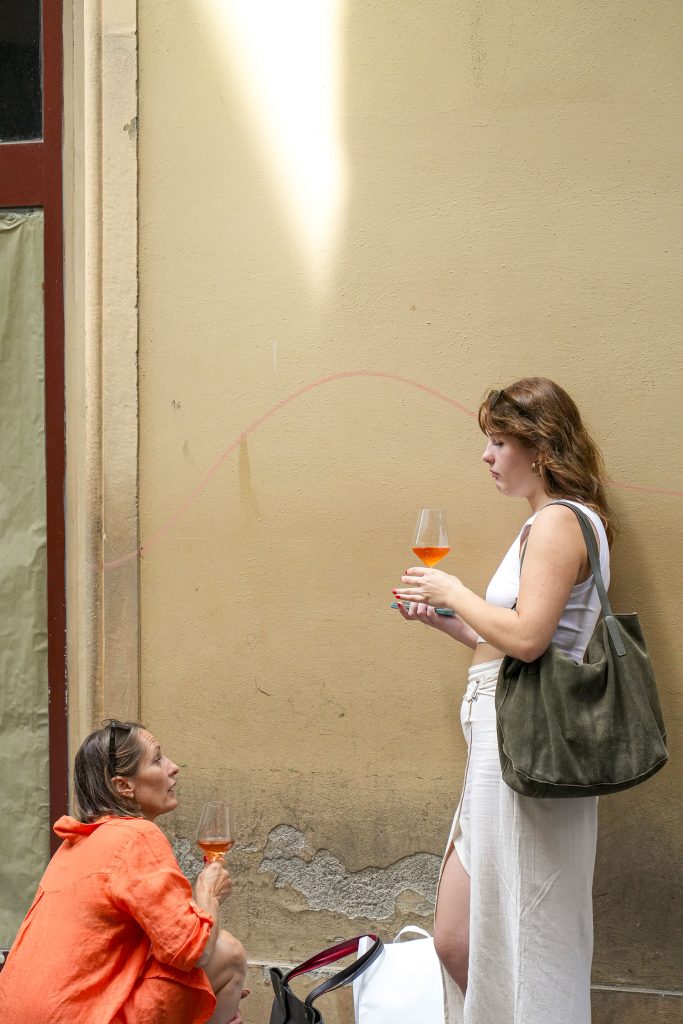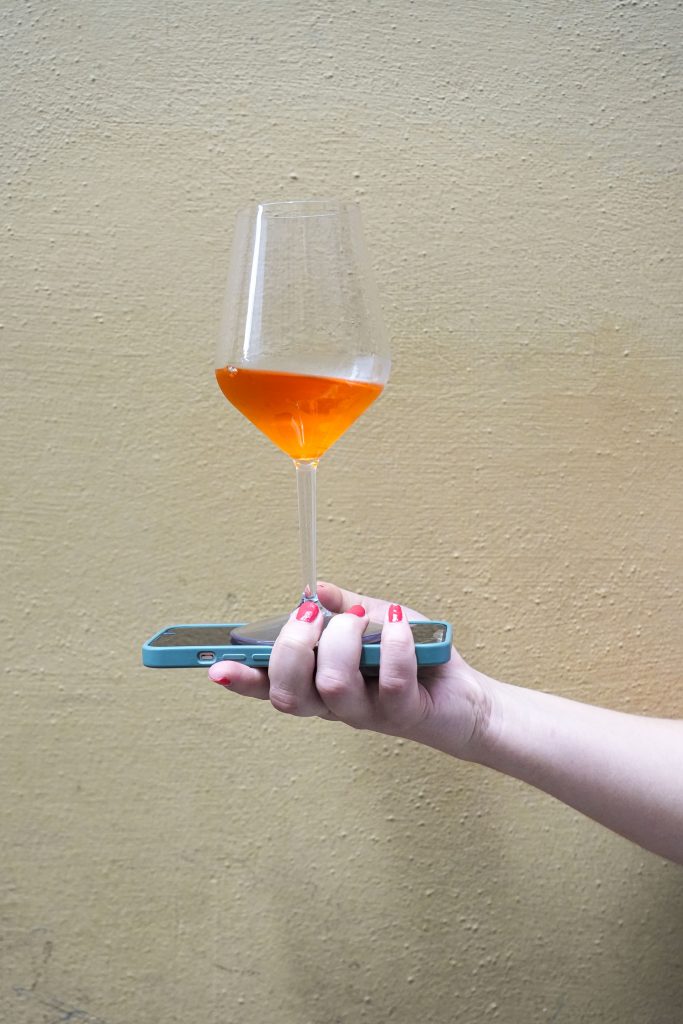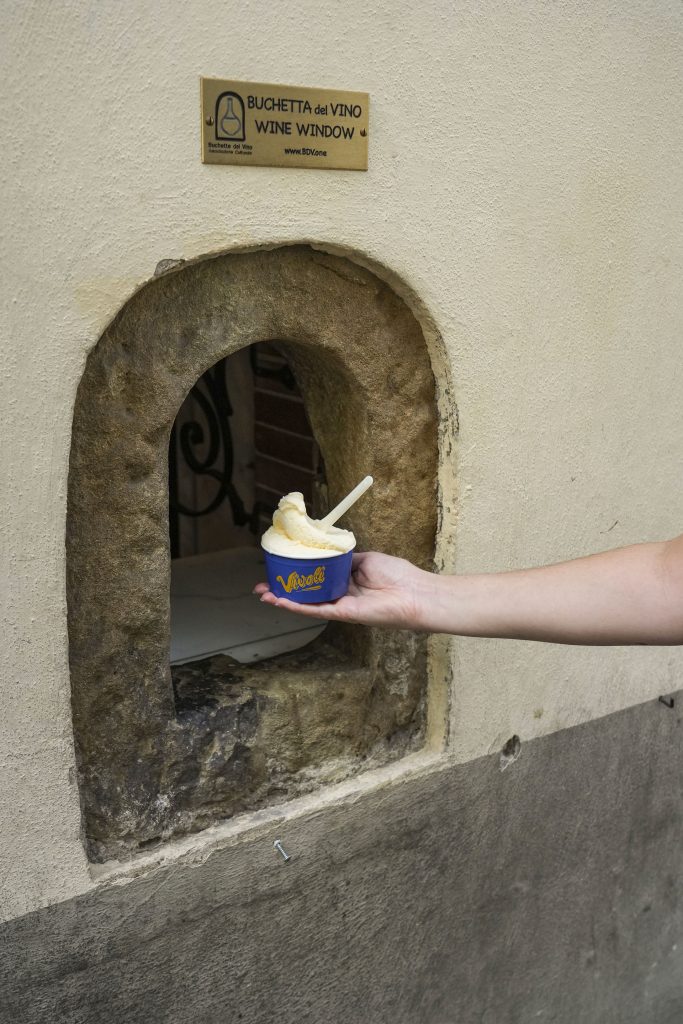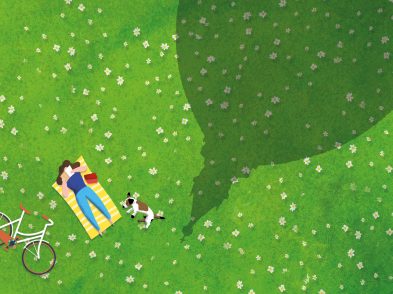Ever since Stanley Tucci delighted American viewers with his 2021 CBS Searching for Italy series, Florence’s buchette del vino, or “wine windows”, have enjoyed a new renaissance. International travellers knock on the wooden doors or ring metal bells to claim a drink, recording the occasion religiously on Instagram and TikTok. But how many of these thirsty types know the backstory behind the buchette?
The exhibition currently being held in the ancient Palagio di Parte Guelfa offers insight into the history and culture of the wine windows. Organized by the Buchette del Vino Association, which was founded in 2015, a reconstruction of a wine seller’s room occupies the centre of the room, while flasks down the centuries, an old stone frame from a former wine window in via Torta and a nail-studded door from a buchetta in via Rondinella are some of the relics displayed beneath the tall coffered ceilings of Sala Brunelleschi. Explanations about lost wine windows offer food for thought in the free-entry, small-scale show open from 10am to 6pm through September 16.
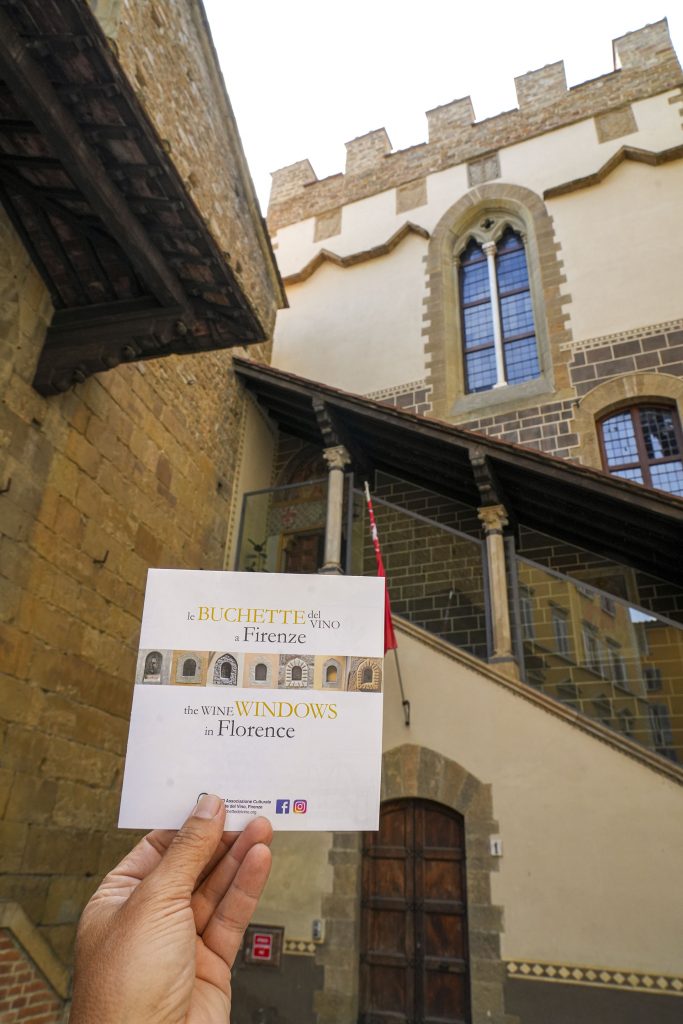
Florence has 181 wine windows within the city walls, 26 in the outlying areas and 112 throughout the rest of Tuscany, the exhibition informs us, but 90 or so were removed from their original locations or lost to building demolition. That’s where the Buchette del Vino Association comes in: educating and encouraging awareness as well as research, maintenance and restoration. “There was one instance whereby the owner of a building with a wine window moved it from one wall to another,” explains Matteo Faglia, president and co-founder of the association, alongside Diletta Corsini and Mary Christine Forrest. “We told them that it was a part of history (they simply didn’t know), so they shifted it back to the original location.” Faglia fell in love with this unique detail of Florence’s cultural heritage when he moved to the city from his native Milan and discovered a buchetta in the palazzo where he was living in borgo degli Albizi. Since then he has devoted his time, energy and wit to ensuring the conservation of these fascinating pieces of the past.
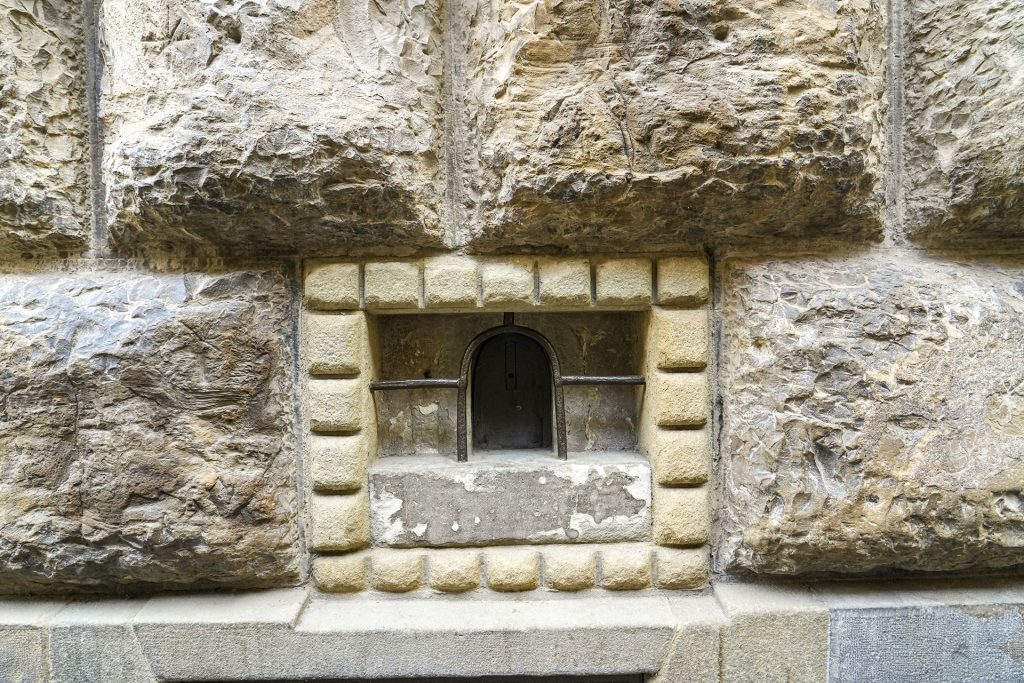
But what constitutes a wine window? “Originally only the noble wine-producing families had a buchetta through which they could sell their own wine, tax-free, to the public. People would knock on the door, which would be opened by a seller (perhaps even a noble himself), and hand over the flask they had brought with them. The vendor would rinse the flask, fill it with wine, which was regarded as a foodstuff, hand it over and receive money in exchange,” explains Faglia. “The wine windows represent 400 years of daily life.”
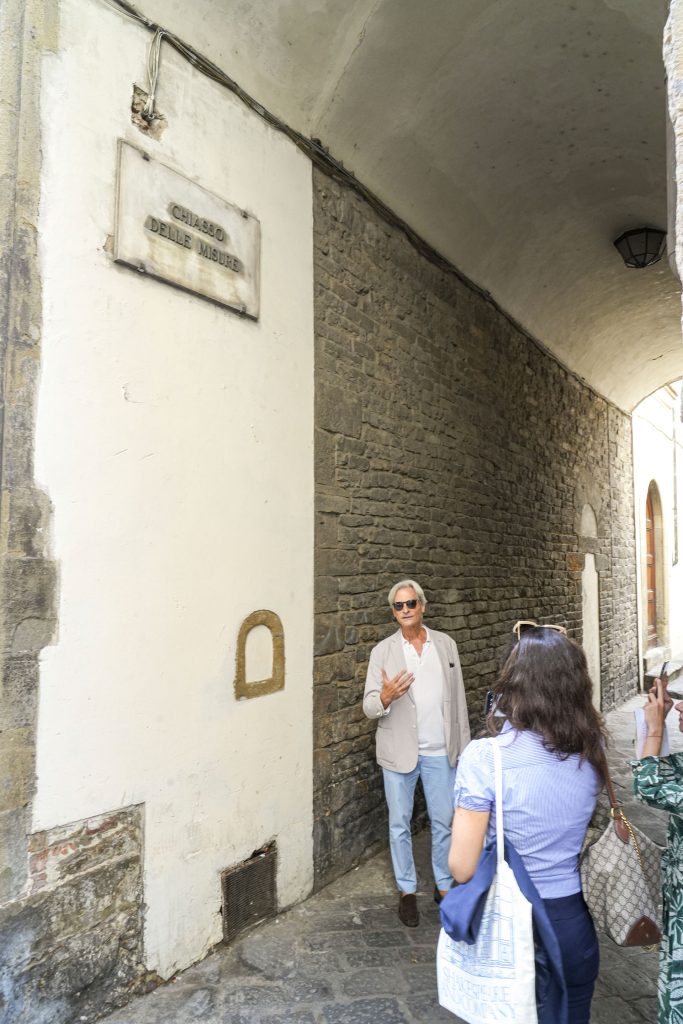
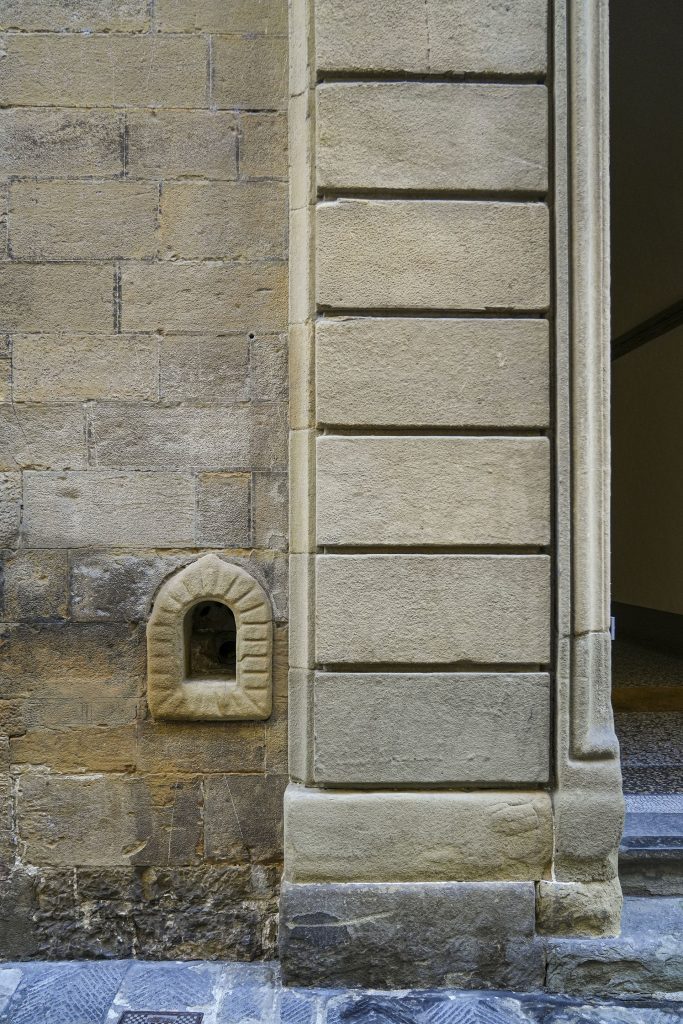
We join Faglia on a historical walk around some of the most central wine doors on the north side of the river. First up is a wine window in chiasso delle Misure. Plastered over, this was the former site of the grand ducal office in charge of measurements, where citizens could check they hadn’t been short-changed in terms of litres of liquids and yards of fabrics, among other items. Usually measuring 20 by 38 centimetres, sometimes as high as 45cm, the window had to be tall enough for a flask to fit through vertically. Just around the corner in via delle Terme, opposite Il Desco restaurant, we see how the pointed frame of the buchetta resembles the shape of the adjacent doorway to the former urban residence of the Nobili family, a common trait among the apertures. Back in the day it must have been quite a feat to craft a wine window in the bulky bugnato ashlars of Palazzo dello Strozzino, the building housing the Odeon cinema and currently being converted into a new cultural centre. An entire stone had to be removed before a buchetta-shaped metal frame was inserted to draw people’s attention to its existence. The twin wine windows on the side of Palazzo Rucellai, in via dei Palchetti (next to I Latini), provide physical evidence of the buchette’s success. “Millions of flasks must have been filled with wine here in the 16th century.”
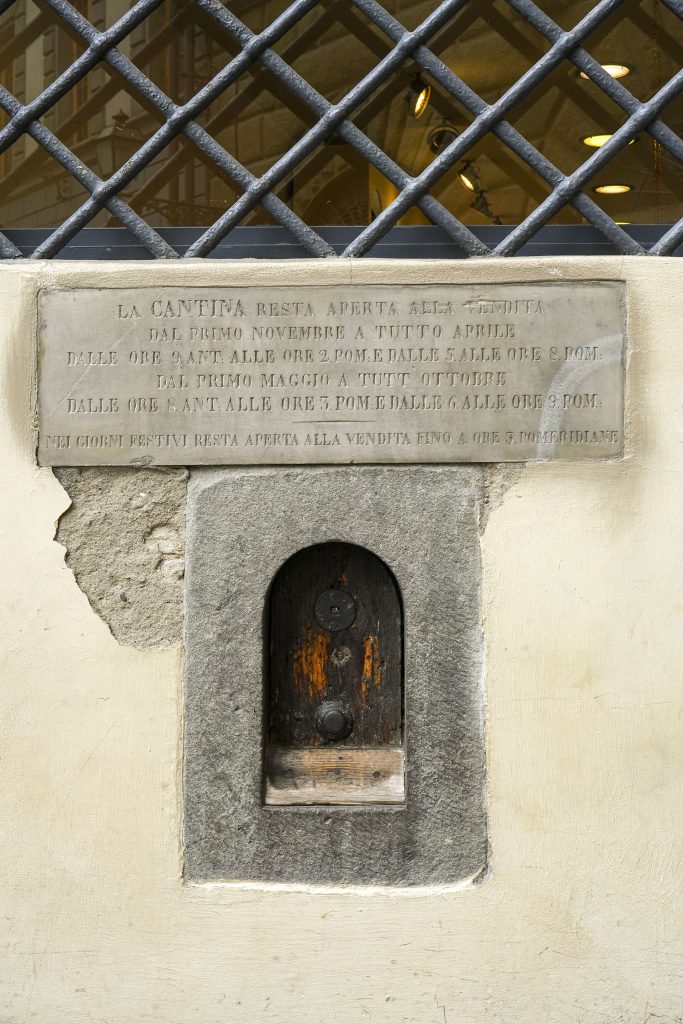
Via delle Belle Donne has always been the nerve centre of the buchetta business. (And no, I’m not referring to the “oldest profession in the world”, which was also centred on this street at around the same time in history.) Faglia points out a marble plaque stating the opening times for this lovely example of a wine window. Business had become so brisk that it became necessary to stop potential buyers from knocking on the doors out of hours. “The only exceptions were for women who had just given birth and needed the sustenance or for soldiers about to go off on a mission,” Faglia elaborates.
That brisk business is now enjoying a second coming up the road at the likes of Osteria Belle Donne, where travellers have a field day knocking on the little door and ordering the tipple of their choice. “You killed it!” giggles one American lady, having received her Spritz, leaving a generous banknote as a tip. From 5 euro for a glass of Chianti to 10 euro for a Spritz, the dashing young bartender kneels on a cushion atop a stone step, opens the wine window, takes payment, closes the window again, has the glasses brought over, releases the latch on the green-painted door and delivers the drinks. It’s a hell of a money-spinner. “We can serve up to 700 glasses a day from 11am to 11pm,” the waiter tells me. I wonder about his back. All that bending over and leaning down cannot be good for one’s posture. Meanwhile, every single client is raving about the experience, even as they sip their drinks beneath umbrellas in the rain and dodge the constant traffic along the narrow Florentine street.
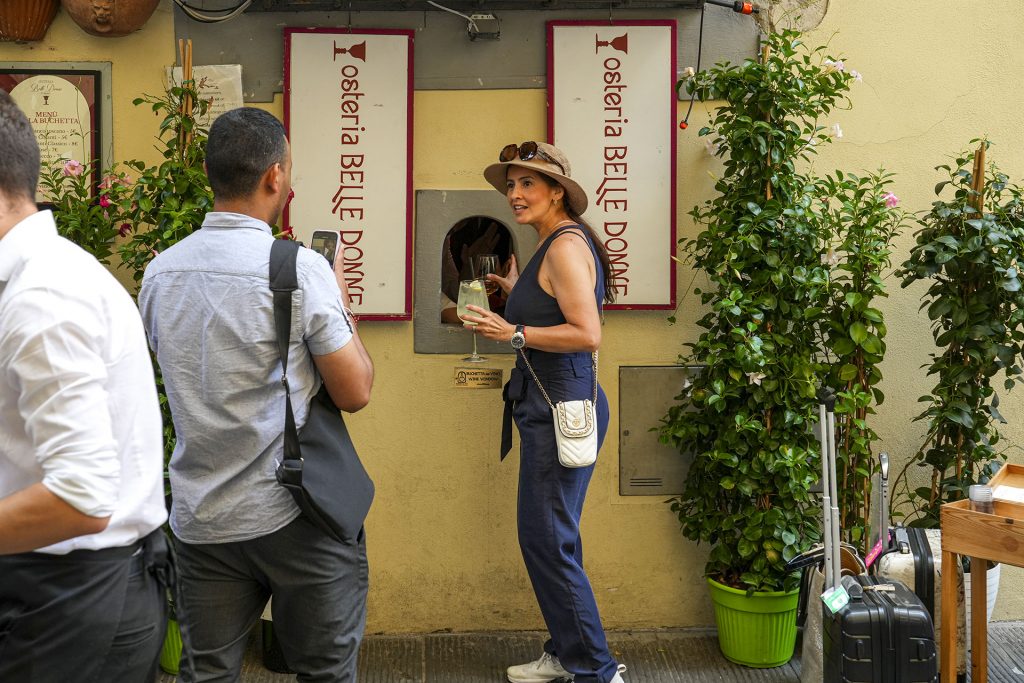
Over in the Oltrarno, Claudio and Chiara of Babae, in via Santo Spirito, opened their wine window in pre-pandemic 2019. “We started off simply by selling shots of vino and schiacciata. Then the Stanley Tucci series featuring us was released in 2021 and everything changed. Now it’s more of a TikTok sensation.” The site of a former antiques store, the Babae wine window is open from 10am to 9pm out of consideration for local residents. A one-price-fits-all policy is operated here, so 8 euro scores you a quality Prosecco, Lambrusco, white, red, rosé or orange wine, although inevitably most customers, many of whom are photogenic women in their early twenties, opt for the Aperol Spritz. Not one person failed to video/photograph their drinks order during the 20 minutes I was there observing. Claudio and Chiara serve two to three hundred glasses a day and have two or three members of staff manning the “hole”. To discourage patrons from making off with the stemware, they now serve plastic glasses (“which actually cost more”) and have set up a basket outside as a collection point. In the coming months, the buchetta bartender’s setup will be renovated to make it more comfortable to work in. It’s true that the backside is rather makeshift with a hard-looking stool and a small table as the (again) attractive employee dries glasses, uncorks bottles, takes orders on a cell phone and card payments on the POS through the black-emulsioned niche.
At Vivoli, the gelateria near Santa Croce, the buchetta business is more laidback these days. That certainly wasn’t the case during Covid-heavy days when the proprietors sold coffee, drinks and gelato through the nook. “It saved us financially,” Silvana and Patrizia Gori tell me. “It started off as a way to have a conversation at a safe distance and then gradually we began selling things through it. We were the first to reactivate the buchetta.” It’s not the first time that Vivoli has come up with a plan to “help” the local community. “25 years ago, my dad had an electric car for deliveries with “soccorso golosi” [rescue for gluttons] written on the side!” Vivoli’s wine (or rather gelato) window sits low down. You can even open it for yourself during opening hours to discover the broad marble ledge, brick inlay and cast iron gate that was renovated by the Vivoli family in 1984. “Often people ask us to serve gelato or coffee through the buchetta, and we’re always happy to do it!”
Wine windows events
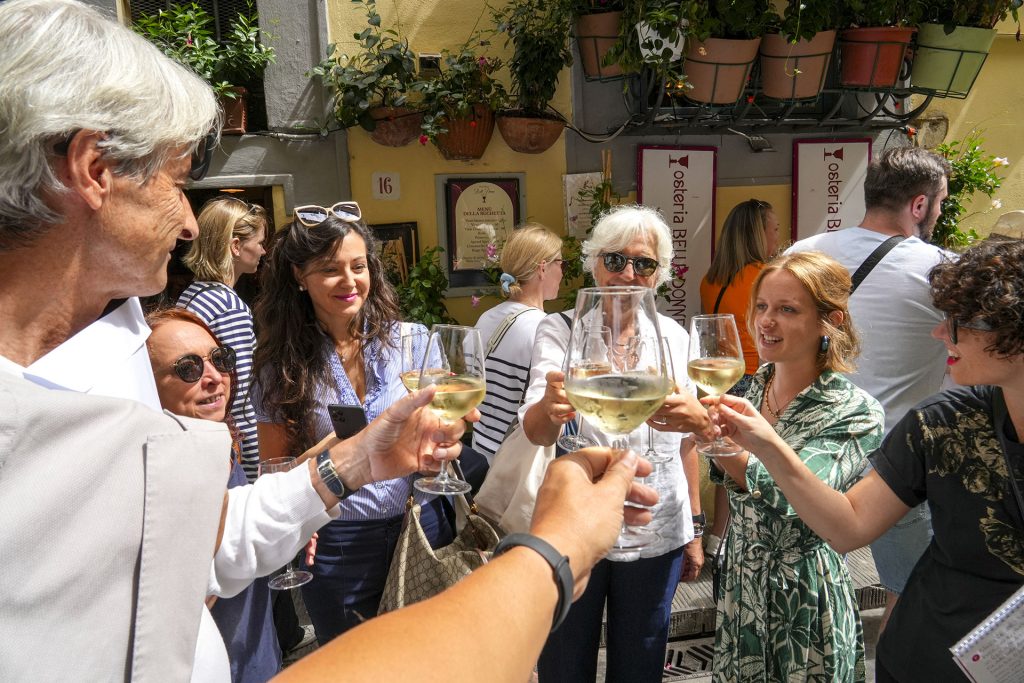
Explore the wine windows on guided tours every 30 minutes through September 16 from 10am to 1pm, 3-6pm daily.
Savour a musical aperitivo at 6pm on September 3 at Vivoli (via Isola delle Stinche 7R), September 6 at Cantina de’ Pucci (via dei Pucci 4) + Osteria Belle Donne (via delle Belle Donne 16R), September 9 at Ristorante Pietrabianca (piazza dei Peruzzi 1) + Fiaschetteria Fantappiè (via dei Serragli 47R), on September 12 at Divin Boccone (via delle Caldaie 30R) + Osteria San Fiorenzo (borgo dei Greci 1A); and on September 15 at Babae (via Santo Spirito 21R).
Take a 9km wine windows bike tour on September 5, 8, 12 + 15 from 10am-12 noon. Bikes will be provided. 15 euro. Booking required: +39 335 1435326

